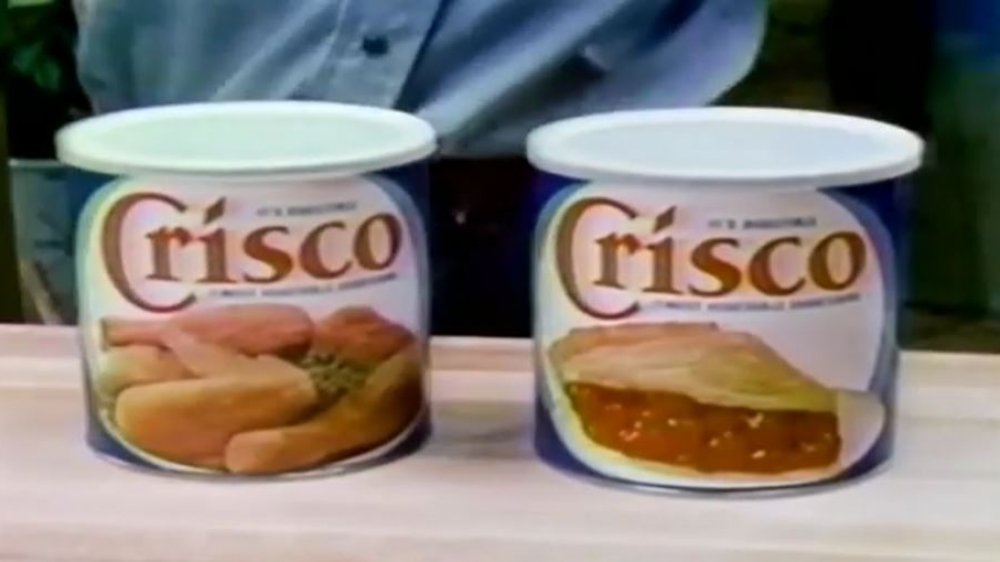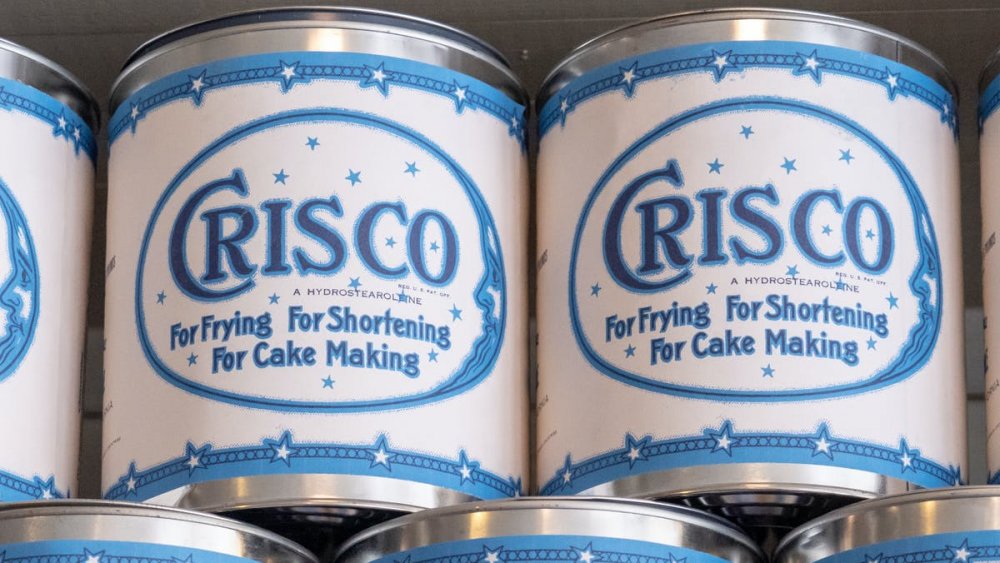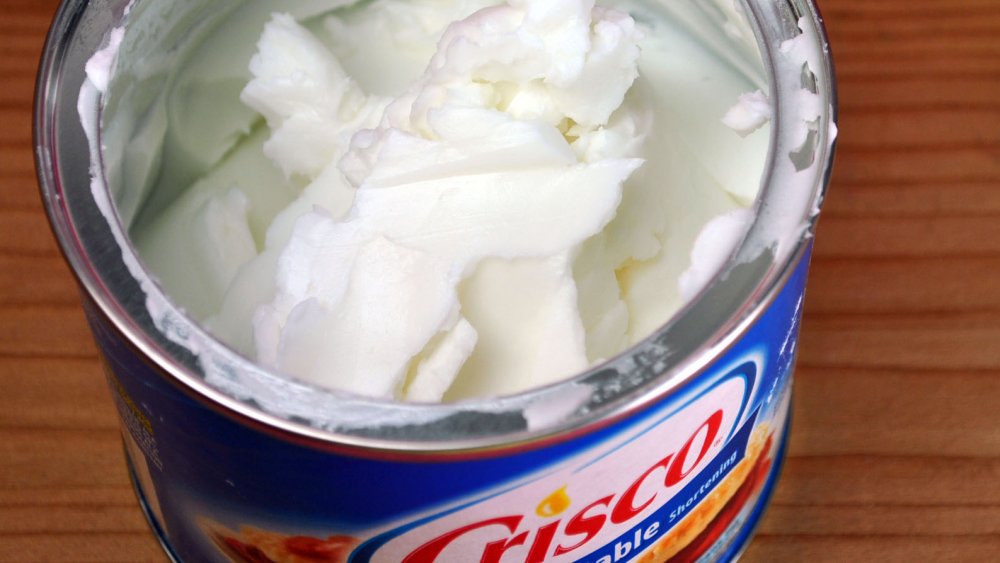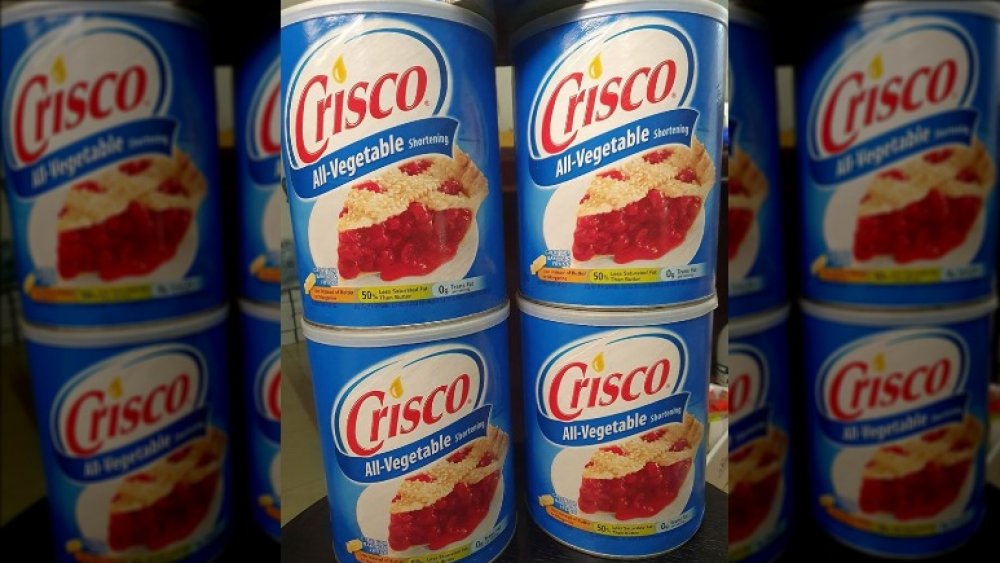The Real Reason People Stopped Buying Crisco
It's hard to imagine but just a few short decades ago, almost everything was cooked in lard. In fact, before it too disappeared from minds and kitchen cabinets, Crisco was actually invented specifically to replace lard after Upton Sinclair's novel The Jungle's portrayal of the meat packaging industry (and lard specifically) caused public opinion to shift (via NPR).
The reason it was so horrifying to readers is because it was less a documentary about the meat industry and more Sweeney Todd, describing the meatpacking workers falling into the hot vats of lard and only their bones being fished out before the product was packaged and sold for human consumption. While the book was technically fiction, the imagery was powerful enough to cause lard to fall out of public favor.
On top of this, in the 1950s, scientists were calling out saturated fats like butter and lard as unhealthy and contributing factors to heart disease, causing more restaurants and food manufacturers to turn away from lard and look for other fats and shortenings. Of course, this opened up space in the diets and kitchens of the United States for a new lard replacement, and Procter & Gamble were quick to fill this hole in the market by creating Crisco.
What made Crisco
Crisco was a hydrogenated cottonseed oil that was basically lard in every way — except it wasn't made from animal fat, so it escaped all of the existing stigma around lard. What really sold Crisco, though, was its marketing campaign. Print advertisements drew comparisons to the benchmark lard and touted Crisco as not only animal-free but also healthier, easier to digest, and a cheaper fat that was ideal for families — but that wasn't all. The main strategy implemented to sell Crisco as a replacement to lard and not just another shortening was that it leaned on branding as pure and trustworthy, packaging the product in white and claiming that "the stomach welcomes Crisco."
Most consumers didn't even know the product was made from cottonseed oil, since the original Crisco packaging did not list its only ingredient, as back then it was not required for products to list ingredients, though most did. Crisco, though, used that loophole to its marketing advantage (via Smithsonian Magazine).
The science of Crisco's fame
Because cottonseed oil was seen as a cheap ingredient, often used to cut other oils or even lard to lower costs, it was in Crisco's best interest to focus on other aspects of its product. For instance, it was the first solid fat made entirely of a once-liquid plant oil, and was created using a new and revolutionary hydrogenation process, but this was not the only science used to market Crisco.
While today we know better, in the 1980s, trans fats were actually seen as a healthier alternative to the saturated fats found in other oils like palm or coconut, with even the Center for Science and Public Interest calling Burger King's switch to partially hydrogenated oils as "a great boon to Americans' arteries" (via NPR). The Crisco marketing campaign took advantage of this, as well as sponsoring cooking programs and sending samples to schools and hospitals. The result was astounding, and soon every household had a container of Crisco in its cabinet. Now you know why your grandmother always had it on hand. So what changed?
What doomed Crisco?
While it's true that Crisco had much less of the saturated fats found in lard, coconut oil, and palm oil, those "healthy" trans-fats have since been linked to clogged arteries and heart disease, making the product a whole lot less appealing to consumers. In fact, the World Health Organization has enacted a plan to eliminate artificial trans fats by 2023, claiming they "are not generally recognized as safe" (via CNN). When this science came out, some food companies attempted to conduct counter-research to re-establish trans fats as healthy, but they were unable to prove it, and in response, many changed their recipes to use what was now considered healthier fats, like sunflower oil.
Crisco was one of them, replacing the cottonseed oil with palm, soy, and canola oils. As a result, the Crisco you'll find on shelves today is almost entirely free of trans fats and has been since 2007 (via NBC News). However, just as with lard, the reputational damage had been done and the stigma around Crisco remains. While it will always be a great resource for vegan or dairy-free baking, Crisco is unlikely to return to its prized spot in the American kitchen (barring some new breakthrough in the science of fat).



